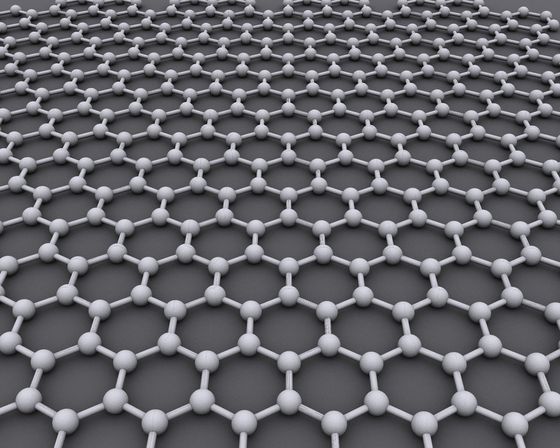Research results that graphene, the world's first 2D material, is also a 3D material

3D strain in 2D materials: Experimental test in unsupported monolayer graphene under pressure
(PDF file) https://arxiv.org/pdf/1902.02651.pdf
Graphene is 3-D as well as 2-D
https://phys.org/news/2019-09-graphene-d.html
Graphene is a honeycomb structured sheet with carbon atoms bonded in a hexagonal shape. It is transparent and soft, but stronger than diamond, and has the highest thermal and electrical conductivity among all materials. Therefore, the capacity of the battery and the strength of the concrete or the doubles, the organic EL display of ultra-thin materials and seawater to fresh water addition to applications in a variety of applications, such as filters that may have been expected, in recent years instead of the bone that was broken In addition, it has been found to be used as a barrier to prevent mosquitoes, and graphene is a “dream material” with unlimited potential.

by
Professor Yiwei Sun's research group at the University of London, Queen Mary, who was doing research on such graphene, applied pressure to graphite (graphite) with a structure in which graphene and graphene are layered, and from the magnitude of strain I was conducting an experiment to check the hardness. In this experiment, the graphene was harder than graphite under the same pressure, which was contrary to the theoretically derived prediction. Therefore, the research group speculated that 'the graphene might stick to the base for measuring pressure, resulting in it being harder than it actually was.'
Based on the above assumption, Professor Sun et al. `` High pressure Raman measurements '' that mix samples with acrylic resin gelled by heating and optically analyze objects that are not fixed To investigate the behavior of graphene under high pressure. As a result, it was confirmed that graphene and graphite were almost the same hardness. However, a new question has arisen here: “It is strange that graphene, which should be only one atom thick, is the same as graphite distorted by pressure”.

by Santosh Gawde
An atom is not actually a ball-like particle, but an indeterminate object in which electrons are covering the nucleus around like a cloud, so the “strict thickness” cannot be calculated using a ruler. On the other hand, the thickness of graphite with 100 layers of graphene can be measured, so it is possible to calculate the thickness of graphene by dividing the thickness of graphite composed of 100 layers of graphene by 100. According to the research group, the thickness of graphene calculated in this way, that is, the diameter of one carbon atom is about 0.34 nm. In another approach, the thickness can be calculated from the Young's modulus and thermal conductivity, which are proportional to strain and stress, and the thickness is reduced to 0.066 nm. However, Prof. Sun said, “Thicknesses determined by either method cannot explain the change in thickness caused by strain of graphene.”
From this, Professor Sun speculates that 'graphene has a thickness corresponding to the structure protruding vertically, not carbon atoms bonded in a plane'. We concluded that graphene has a three-dimensional structure rather than a two-dimensional structure, although it is very thin. Also, “The same thing seems to apply to molybdenum disulfide and boron nitride, which are said to be two-dimensional materials like graphene. In that sense, all three that have been said to be two-dimensional materials so far are 3 'It's a dimensional material,' he said. In the nano-scale world, he indicated that even graphene has a three-dimensional thickness.
Related Posts:
in Science, Posted by log1l_ks







